In the age of digital transformation, Artificial Intelligence (AI) drives innovation and competitive advantage. However, AI projects’ success heavily depends on the quality and governance of the data used. Poor data governance can lead to data breaches, regulatory non-compliance, biased AI models, and inaccurate decision-making. These challenges underscore the need for robust data governance frameworks to manage, protect, and optimize data assets effectively.
This blog addresses these critical issues by exploring the role of data governance in AI projects. We will define data governance, explain its key objectives, and outline essential components for implementation. Additionally, we will provide practical insights on integrating data governance into AI initiatives, overcoming common challenges, and adopting best practices. By the end of this blog, you will understand how to establish effective data governance practices that enhance the success and sustainability of your AI projects.

Understanding Data Governance in AI Projects
Data governance in AI projects ensures the effectiveness, reliability, and ethical integrity of AI applications. These objectives include data integrity, security, regulatory compliance, and risk management. Let’s explore each in detail, highlighting the expertise required to achieve these goals.
Data Integrity
Ensuring data integrity is fundamental to the success of AI projects. Data integrity refers to maintaining the accuracy, consistency, and reliability of data throughout its lifecycle. High-quality data is the bedrock of effective AI models. Key strategies to ensure data integrity include:
- Data Validation: Implement robust validation mechanisms to identify and correct errors.
- Consistency Checks: Regularly audit data to ensure consistency across systems.
- Data Cleaning: Continuously clean and refine data to remove inaccuracies and outdated information.
Maintaining data integrity requires a disciplined approach and continuous monitoring to prevent errors that could compromise AI model performance.
Security
Data security is paramount in AI projects, given the sensitive nature of the data involved. Protecting data from unauthorized access and breaches is essential to maintain trust and comply with legal standards. Effective data security measures include:
- Access Controls: Implement role-based access controls and multi-factor authentication.
- Encryption: Utilize encryption technologies to protect data both at rest and in transit.
- Monitoring and Incident Response: Establish monitoring systems and an incident response plan.
Focusing on data security protects data assets, fosters stakeholder trust, and ensures compliance.
Regulatory Compliance
Adhering to relevant laws and regulations governing data usage is a cornerstone of data governance in AI projects. Regulatory compliance ensures that organizations operate within legal frameworks and avoid costly penalties. Key aspects of regulatory compliance include:
- Understanding Regulations: Stay updated on relevant data protection laws and regulations, such as the General Data Protection Regulation (GDPR), California Consumer Privacy Act (CCPA), and other industry-specific standards. Understanding these regulations helps organizations align their data practices with legal requirements.
- Policy Implementation: Develop and enforce comprehensive policies that align with regulatory requirements. These policies should cover data collection, storage, processing, and sharing practices, ensuring that all activities comply with legal standards.
- Audit and Reporting: Conduct regular audits to assess compliance with regulatory standards. Maintain detailed records of data governance practices and compliance efforts to demonstrate adherence during audits and regulatory reviews.
Regulatory compliance is an ongoing effort that requires organizations to continuously adapt to changing laws enforce policies and standards, ensuring that their data governance practices remain up-to-date and effective.
Risk Management
Effective risk management identifies and mitigates risks associated with data handling and AI model deployment. Key strategies include:
- Risk Assessment: Conduct thorough assessments to identify vulnerabilities.
- Mitigation Plans: Develop and implement plans to address identified risks.
- Continuous Monitoring: Establish mechanisms to detect and respond to emerging risks.
Integrating risk management into data governance ensures reliability and integrity in AI projects.

Core Components of Data Governance in AI
Effective data management and governance in AI projects requires attention to several core components. These components ensure that data is managed, protected, and optimized to support the development and deployment of AI models. Key components include data quality management, metadata management, and model and data governance capabilities. Let’s delve into each of these areas with a focus on best practices and strategies.
Data Quality Management:
Effective data governance in AI projects requires attention to several core components, including data quality management, metadata management, and model governance. Let’s delve into each of these areas with a focus on best practices and strategies.
- Data Accuracy: Implement robust validation mechanisms to verify data accuracy during collection and processing. Use automated tools to detect and correct errors, inconsistencies, and duplicates.
- Data Completeness: Ensure that datasets are comprehensive and contain all necessary information. Conduct regular audits to identify and fill gaps in data.
- Data Relevance: Continuously evaluate data relevance to ensure that only pertinent data is used in AI models. Remove outdated or irrelevant data to maintain the quality and integrity of datasets.
- Data Standardization: Standardize data formats and definitions to ensure consistency across different data sources and systems. This facilitates seamless data integration and analysis.
By focusing on these strategies for training data first, organizations can maintain high data quality, which is essential for the machine learning and developing effective and trustworthy AI models.
Metadata Management:
Metadata management facilitates data discovery, lineage tracking, and regulatory compliance. Effective metadata management involves:
- Data Discovery: Create comprehensive metadata catalogs.
- Lineage Tracking: Implement tools to track data lineage.
- Regulatory Compliance: Ensure metadata includes information required for compliance.
- Documentation: Maintain detailed documentation and regularly update metadata.
Effective metadata management enhances data governance by providing visibility into data assets and supporting efficient data utilization.
Model Governance:
Robust model governance frameworks manage AI models throughout their lifecycle. Key aspects of model governance include:
- Development Guidelines: Establish guidelines for model development and data preparation.
- Validation and Testing: Implement rigorous validation and testing procedures.
- Deployment Controls: Define protocols for model deployment and ensure secure monitoring.
- Ongoing Monitoring: Continuously monitor model performance and compliance.
- Version Control: Maintain version control to track model changes and updates.
By implementing robust model governance frameworks, organizations can ensure AI models are reliable, ethical, and compliant.
Integrating Data Governance into AI Initiatives
Integrating data governance into AI initiatives is essential for ensuring data quality, regulatory compliance, and optimal model performance. This involves establishing clear data governance policies, fostering collaboration, and leveraging automation and technology solutions.
Establishing Data Governance Policies:
Developing clear data governance policies is essential for managing data effectively in AI projects. These policies provide a framework for data access and handling, ensuring consistency and compliance. Key aspects include:
- Data Access Policies: Define who can access different types of data. Implement role-based access controls to ensure that only authorized personnel can access sensitive data. This minimizes the risk of data breaches and unauthorized use.
- Data Usage Policies: Establish guidelines on how data can be used within the organization. Specify permissible use cases, data processing methods, and ethical considerations. This ensures that data usage aligns with organizational objectives and regulatory requirements.
- Data Sharing Policies: Outline protocols for sharing data internally and externally. Include provisions for data anonymization and secure transfer methods to protect data privacy and integrity. This is particularly important when collaborating with third parties or across different departments.
By implementing comprehensive data governance policies, organizations can ensure that data handling practices are consistent, compliant, and aligned with their strategic goals.

Collaboration and Communication:
Effective data and ai governance often requires collaboration between data governance teams, data scientists, and business stakeholders. This collaboration ensures that data and ai governance practices support the organization’s AI objectives and comply with regulatory requirements. Key strategies for ai governance include:
- Cross-Functional Teams: Create cross-functional teams that include members from data governance, data science, IT, and business units. This promotes a holistic approach to data governance, addressing technical, operational, and strategic considerations.
- Regular Communication: Establish regular communication channels, such as meetings, newsletters, and collaboration platforms, to keep all stakeholders informed about data governance initiatives, updates, and challenges. This ensures transparency and fosters a culture of data stewardship.
- Alignment with Organizational Goals: Ensure that data governance practices align with the organization’s broader goals and objectives. This involves understanding business needs, regulatory requirements, and technological capabilities, and integrating them into data governance strategies.
By fostering collaboration and communication, organizations can create a cohesive and effective data governance framework for AI systems that supports their initiatives.
Automation and Technology Solutions:
Leveraging automation and technology solutions is vital for streamlining data governance processes. Key solutions include:
- Data Governance Platforms: Implement platforms for centralized management of data policies and compliance tracking.
- AI-Driven Analytics Tools: Use AI-driven tools to monitor data quality and ensure compliance.
- Automation of Data Processes: Automate routine data governance tasks to reduce manual effort and enhance efficiency.
By integrating automation and technology solutions, organizations can enhance the efficiency and compliance of their AI initiatives.

Overcoming Challenges and Roadblocks
Implementing data governance in AI projects is critical but often met with challenges. These include cultural resistance, resource constraints, and navigating an evolving regulatory landscape.
Cultural Shift:
Cultural challenges, including resistance to change and lack of awareness of modern data governance,, can impede data governance in AI projects. To overcome these barriers:
- Education and Training: Offer comprehensive programs to educate employees on the importance of data governance and its impact on AI success, emphasizing data quality, security, and compliance.
- Leadership Support: Ensure top leadership champions data governance initiatives, setting the organizational tone for their necessity and value.
- Change Management: Utilize structured change management processes, clear communication, and benefit highlighting to ease the transition.
- Incentives and Rewards: Implement incentives to recognize and reward adherence to data governance policies, fostering a positive cultural shift.
Addressing these challenges creates new capabilities and an environment that values data governance, enhancing future AI project effectiveness.
Resource Allocation:
Resource constraints, such as limited budgets, insufficient personnel, and competing priorities, are common hurdles in implementing modern data and governance initiatives. To overcome these challenges, organizations should prioritize data governance efforts based on impact and feasibility, focusing on high-risk areas and critical data assets that influence AI model performance and compliance. Investing in modern data and governance tools and automation solutions can streamline processes, reduce manual effort, and enhance efficiency. Cross-training existing staff to expand their skills and knowledge in data governance maximizes resource utility without extensive hiring. Additionally, partnering with external experts or consultants can provide specialized knowledge and support in a cost-effective manner. By strategically allocating resources and leveraging technology solutions, organizations can effectively implement robust data governance practices despite these constraints.
Regulatory Landscape:
The regulatory landscape for AI and data governance is constantly evolving with new privacy regulations and ethical considerations. Organizations must stay informed and adaptable to maintain compliance. Key strategies include continuously monitoring regulations like GDPR and CCPA, developing and updating compliance frameworks, incorporating ethical considerations into data governance to ensure transparency and fairness, and engaging with regulatory bodies to anticipate and prepare for changes. By staying proactive and informed, organizations can navigate the evolving regulatory landscape, ensuring their AI initiatives remain compliant and ethical.
Best Practices and Recommendations
Define Clear Roles and Responsibilities:
Establishing clear roles and responsibilities is crucial for effective data governance in AI projects. Designate specific roles for data governance teams, data stewards, and other stakeholders to ensure accountability and streamline processes. Data governance teams should oversee the implementation of policies and procedures, while data stewards are responsible for maintaining data quality and integrity. Other stakeholders, including data scientists, IT professionals, and business leaders, should collaborate to align data governance initiatives with organizational goals. Clear role definitions prevent overlaps and gaps, fostering a cohesive approach to data management and compliance.
Foster Data Literacy:
Promoting data literacy across the organization is essential for the success of data governance initiatives. Employees must understand the importance of data governance and their role in maintaining data quality and integrity. Implement training programs and workshops to educate staff about data governance principles, data handling best practices, and compliance requirements. Encourage a data-driven culture where employees recognize the value of accurate, secure, and compliant data. Enhancing data literacy ensures that everyone in the organization can contribute to maintaining high data standards, ultimately supporting reliable and ethical AI models.
Continual Improvement:
Data governance is not a one-time effort but an ongoing process that requires continual improvement and adaptation. Regularly review and update data governance practices to keep pace with evolving business needs and regulatory requirements. Implement feedback loops to identify areas for improvement and address emerging challenges. Use metrics and KPIs to measure the effectiveness of data governance initiatives and make data-driven decisions for enhancements. By fostering a culture of continual improvement and continuous assessment, organizations can ensure that their data governance frameworks remain robust, compliant, and aligned with technological advancements and market demands.

Conclusion
Robust data governance is essential for the success of AI projects. By defining clear roles and responsibilities, fostering data literacy, and emphasizing continual improvement, organizations can build a strong foundation for managing their data assets. Effective data governance ensures data quality, regulatory compliance, and ethical AI model development. Prioritizing data governance as a core element of AI strategies enables organizations to leverage AI technologies responsibly and sustainably. Moving forward, organizations should focus on implementing these best practices to enhance their data governance frameworks, ensuring long-term success and compliance in their AI initiatives.


